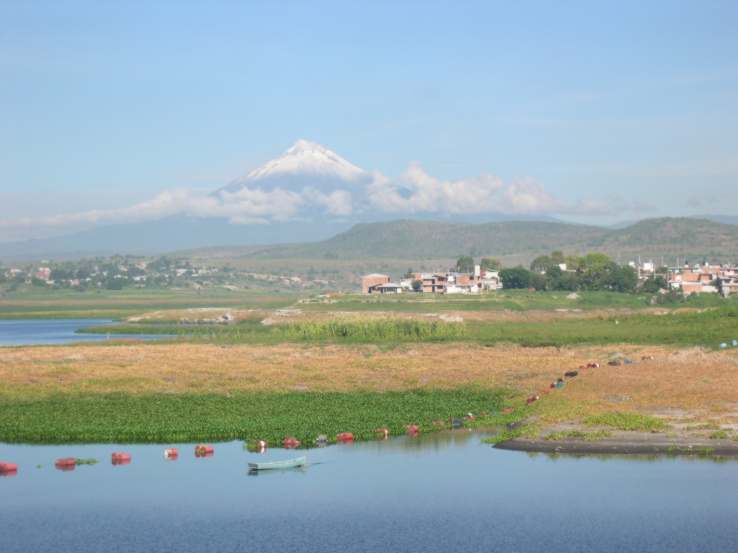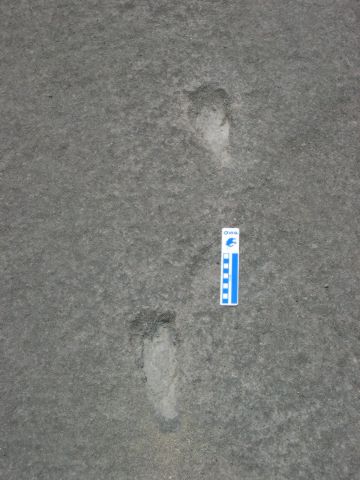
| Home | The Team | Images | Methods/Fieldwork |
 |
Palaeoenvironment of the Valsequillo Basin, Mexico | |||
|
 |
Implications for early human settlement of the Americas |
|
| When were the Americas first colonised? By which route did the first colonisers enter the Americas? These are some of the most highly debated questions in human evolutionary studies. Until 2005 the most widely accepted dates for colonisation were at around 11,500 to 12,000 years BP, although several researchers believe the earliest settlement began around 30,000 yr BP or even earlier. The recent discovery (announced July 2005) by Dr Silvia Gonzalez, Liverpool John Moores University of 269 human footprints preserved in the Xalnene volcanic ash from the Toluquilla volcano in the Valsequillo basin (Central Mexico) puts the date of first human appearance back to around 40,000 years BP. Thus the Valsequillo basin has become the most important early archaeological site in the Americas. Geological mapping was undertaken (by Dr Harold Malde) in the 1960’s, and diatoms were analysed (by Dr Sam Van Landingham) from much older sediments (Sangamonian) from the lake basin. Very little, however, is known about the basin’s climatic and environmental history during the late Pleistocene and the Early Holocene and at the time of formation of the footprints. |
||
| The Footprints |  |
|
During part of the Upper Pleistocene it appears that the Valsequillo basin was occupied by a large lake dammed by a thick lava flow to the east of the basin. The footprints were made shortly after the deposition of the Xalnene ash and were preserved as trace fossils by the relatively fast deposition of fine-grained lake-sediment as the lake later transgressed across the site. The volcanic ash hardened thus preserving the footprints. It appears that the lava dam was breached at some point in the past and the large Pleistocene lake drained. Today a manmade reservoir occupies part of the basin. In order to understand when and how the trace fossils were preserved, it is vital to build a clear picture of the behaviour of the lake during the Pleistocene. |
||
 |
Our Research | |
| Our aim is to reconstruct the environmental history of the Valsequillo basin prior to and after first colonisation by humans. Study of Valsequillo is extremely important both in terms of providing the environmental context for the early human colonisation, and a palaeoclimatic record for at least the late Pleistocene, a period for which few records are available from Mexico or Central America. | ||
| Collaboration | 
| |
| This research is part of a larger collaborative project investigating the geoarchaeology and the geochronology of the Valsequillo basin, within a wider initiative to re-investigate the earliest known palaeoindian sites, with evidence of early human presence in Central Mexico. Details of the footprints and the ‘Peopling of the Americas’ research programme can be found at : http://www.mexicanfootprints.co.uk/ | ||
 |
Funding | |
Natural Environment Research Council ( NERC) Standard Research Grant ( NE/C519446/1)
|
||
| University of Nottingham | Home • The Team • Images • Methods/Fieldwork |